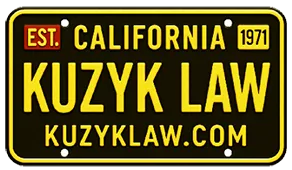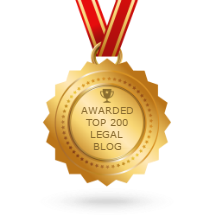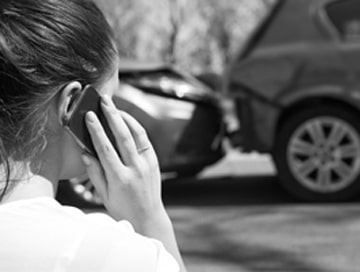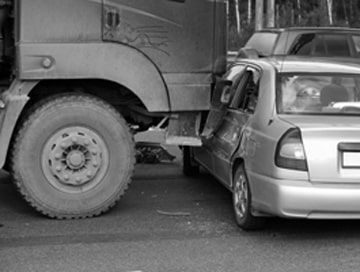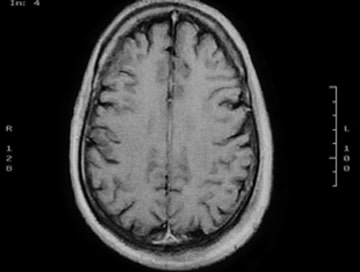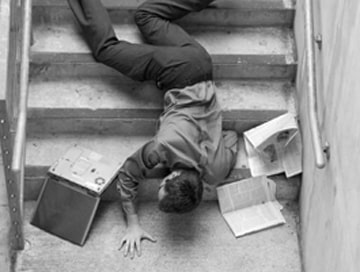Knowing what to do following a slip and fall accident will help you to maximize your capacity to obtain compensation, protect your health, and preserve necessary evidence.
Seeking timely medical attention, recording the scene, notifying the property owner of the fall, and conserving evidence like pictures and witness notes rank highest among the early actions.
Notify insurers, compile injury treatment records, and see an experienced personal injury attorney to help you file a slip and fall claim in Bakersfield courts following medical treatment and injury stabilization.

Common Slip and Fall Injuries and Their Impact
Spinal cord injuries
Slip and fall accidents can result in a wide spectrum of injuries, ranging from minor discomfort to life-altering trauma. Understanding the potential consequences underscores the importance of seeking prompt medical attention and exploring legal options.
Minor Soft-Tissue Injuries
These cover sprains, strains, and bruising. These injuries can cause significant discomfort, restrict your range of motion, and interfere with your everyday life and capacity to work, even though they do not instantly render you disabled. For a correct diagnosis and treatment to avoid long-term problems, early medical attention is vital.
Moderate Injuries
Common intermediate injuries are fractures—broken bones—especially in the wrists, ankles, or hips, and herniated discs. Usually requiring more thorough medical intervention, these include casting, surgery, and lengthy physical rehabilitation. Long recuperation times can result in significant medical bills and lost income.
Catastrophic Injuries
In the most extreme circumstances, falls can cause catastrophic injuries, including spinal cord injury and traumatic brain injury (TBI).
These injuries can be disastrous, usually resulting in lifetime medical treatment, lasting disability, and significantly affecting the quality of life and that of their family. Pursuing the complete compensation required to meet these long-term demands calls for legal representation.
Bakersfield-Specific Hazards Leading to Slip and Fall Accidents
Local Bakersfield environmental and infrastructure elements raise fall risk. Hot summers can distort pavement, posing trip risks on parking lots and sidewalks.
Periodically, intense rain washes dust and oil into the flooring within retail stores, rendering tile and vinyl surfaces dangerously slick. Employers, property managers, and homeowners should monitor these Bakersfield-specific issues and take early action.
1. Seek Medical Attention Immediately
Even if you feel good after “slipped and fell,” some injuries, like concussions or internal bleeding, may show hours or days later. See the closest urgent care or emergency department to get your injuries thoroughly assessed and recorded.
A legitimate pedestrian injury claim or slip-and-fall lawsuit depends on you first documenting your injuries; a medical record links the fall to your treatment.
Follow your doctor’s advice exactly; insurance companies can exploit disobedience or missed appointments to claim that your injuries are minor.
2. Inspect and Document the Accident Scene
The scene of your fall contains important hints on what transpired and possible responsibility. Take the following actions before anything is changed, if your physical condition permits:
Photograph the Hazard:
Use your phone or camera to capture clear images of the specific dangerous condition that caused you to fall. This could be a slippery wet floor, a torn or uneven carpet, a spilled substance, or a crack in the pavement.
Obtain Wide-Angle and Close-Up Shots:
Take both broad photos to show the overall environment and detailed close-ups of the exact defect that led to your fall.
Document the Absence of Warnings:
Note and photograph any missing warning signs (e.g., “Wet Floor”) or safety barriers that should have been present. This can be strong evidence of the property owner’s negligence.
Sketch a Diagram:
Create a simple sketch of the area, marking the location where you fell, the position of the hazard, any nearby landmarks, and your direction of travel. This can help you and your attorney reconstruct the events later.
3. Report Your Fall to the Property Owner or Manager
Whether your slip and fall happened in an office building, a retail store, or a public location, early notification of the event to the property owner or manager is vital to strengthen your case.
If the business lacks formal procedures, send a written notice by email or certified mail describing the accident, its location, and your injuries.
Record who you spoke with, the time, and any statements made.
4. Gather Witness Information
Eyewitnesses help to support your version of events by offering objective reports of what they witnessed. Get their data yourself first.
Obtain Names and Contact Details:
While their memories of the event are still fresh, ask any witnesses for their complete names, phone numbers, and email addresses.
Request Brief Statements:
Ask witnesses, if feasible, a quick written or recorded (with permission) statement summarizing what they saw.
Identify Employees Who May Have Knowledge:
If an employee knew the hazard before the fall or witnessed the incident, their testimony can be particularly compelling in establishing the property owner’s negligence.
5. Preserve All Evidence
Keep the shoes and clothing you wore when you fell; do not wash or throw them, since physical proof can come from stains or damage.
Organize all your correspondence—reports, medical bills, appointment summaries, and repair notes.
Photograph your injuries over time; bruises change color and can fade, but images create a permanent record.
6. Notify Your Insurance Companies
Tell your insurance companies about the slip and fall incidence:
Your Health Insurer:
Notify your health insurance company so they can begin processing your medical bills according to the terms of your policy.
Homeowner’s or Renter’s Insurance:
Check your policies, as some include medical payments coverage that can help pay for injuries sustained by visitors on your property, regardless of fault.
When Contacting the Property Owner’s Insurer:
When you are contacted by the property owner’s liability insurance carrier, provide only the basic facts of the incident. Avoid speculating about who was at fault or discussing any potential settlement offers at this early stage. However, do request any surveillance footage or internal incident reports they may have related to your fall.
7. Understand California’s Slip-and-Fall Laws
California premises liability law mandates that property owners maintain their premises safely by “reasonable care.” In a slip and fall lawsuit, you have to show:
- An unreasonably dangerous condition existed (e.g., a slick floor without warnings).
- The owner knew or should have known about the hazard.
- The hazard caused your slip accident.
- You suffered damages, such as medical bills or lost wages.
Comparative negligence allows your compensation to be reduced if you share fault, so demonstrating the owner’s apparent negligence is crucial.
Be aware that California follows a comparative negligence rule. If you are found to be partially at fault for your fall (e.g., not paying attention), your compensation may be reduced by your percentage of fault. Therefore, establishing the property owner’s negligence is crucial.
8. How to File a Slip and Fall Claim
Your attorney will create a demand package including your injuries, treatment expenses, and lost income after you have pictures, medical records, and witness statements.
Most slip and fall claims in Bakersfield resolve before a lawsuit—often in six to twelve months—but contested situations may call for filing in Kern County Superior Court.
9. Treatment and Recovery
Effective slip and fall injury treatment often combines:
- Pain management (medication, injections)
- Physical therapy and rehabilitation
- Assistive devices (braces, walkers)
- Mental health support for trauma-related anxiety
10. When to Consult a Personal Injury Attorney
If you’re unsure what to do after a slip and fall accident, or if the property owner’s insurer disputes your case, speak with an experienced Bakersfield slip and fall lawyer immediately.
Early legal intervention preserves evidence, like video or witness availability, and counters insurer tactics to delay or deny fair compensation.
How to Choose the Right Attorney for Your Slip and Fall Claim
When evaluating a lawyer for your slip and fall injury case, consider:
- Local Experience:
Familiarity with Bakersfield judges, jury pools, and medical providers.
- Track Record:
Proven success in premises liability and fall-injury matters—review verdicts & settlements for results.
- Communication & Resources:
Access to accident-reconstruction experts, investigators, and medical specialists.
- Client Testimonials:
Read real client experiences on our testimonials page.
Why Work with Kuzyk Car Accidents & Personal Injury Lawyers?
Local Bakersfield Expertise – We know Kern County’s courts and medical experts.
Comprehensive Injury Practice – From whiplash to spinal cord injuries, we handle all fall-related trauma.
Proven Results – Read real success stories in our client testimonials.
Contingency Fee – No fees unless we recover for your slip and fall claim.
Don’t Delay Your Path to Recovery and Justice After a Bakersfield Slip and Fall. Contact Kuzyk Car Accidents & Personal Injury Lawyers Today.
If you or a loved one has been seriously injured in a fall, don’t wait. Evidence can disappear, witnesses relocate, and filing deadlines loom. Contact Kuzyk Car Accidents & Personal Injury Lawyers today at our contact page for a free, no-obligation consultation, and take the first step toward recovery and justice.
Frequently Asked Questions: Your Slip and Fall Accident FAQs
What are the most critical first steps immediately after a slip and fall accident?
The most important immediate actions after you “slipped and fell” are to prioritize your safety, seek prompt medical attention even for seemingly minor injuries, and if possible, document the fall scene before anything is altered.
How can documenting the scene of my fall help with a potential slip and fall claim?
Thorough documentation, including photographs of the hazard that caused your “slipped and fell” incident, wide shots of the area, and notes on any missing warning signs, serves as crucial evidence to demonstrate the dangerous condition and potential negligence of the property owner.
Should I report my fall to the property owner or manager, and if so, how should I do it?
Yes, you should report your “accident fall” to the property owner or manager as soon as possible. Ask to file an official accident report and obtain a copy. If no formal procedure exists, send written notice via email or certified mail, detailing the incident, location, and your injuries.
What role do witness statements play in a “slip accident” case, and how should I gather this information?
Witnesses who saw you “slip and fall” can provide valuable corroboration of your account. Collect their names, phone numbers, and email addresses while their memories are fresh. With their permission, record short video statements. Witnesses who observed the hazard beforehand can also be crucial.
What is the significance of preserving evidence beyond just photos and witness information in a “slipped in accident” situation?
Preserving physical evidence, such as the clothes and shoes you were wearing, without washing or discarding them, can be important, as stains or damage might serve as tangible proof. Additionally, maintaining a file of all related correspondence, medical bills, and injury photos over time strengthens your “pedestrian injury claim” or slip and fall case.
